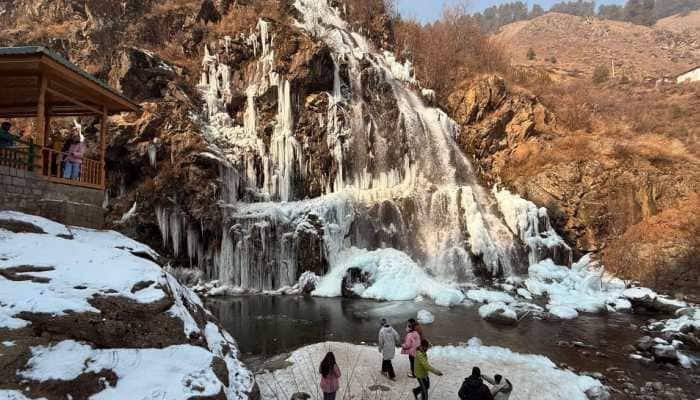Trillion tonne iceberg breaks off Antarctica shelf
The iceberg weighs a staggering trillion tonnes and has an area of 5,800 sq km.
Trending Photos
) Image for representational purpose only
Image for representational purpose only London: An enormous iceberg has broken off from a key floating ice shelf in Antarctica, scientists have announced.
The iceberg weighs a staggering trillion tonnes and has an area of 5,800 sq km. It was found to have split off from the Larsen C segment of the ice shelf on Wednesday after scientists examined the satellite data from the area, the Daily Mail reported.
Scientists at the University of Swansea in Britain said they were expecting it. They had been following the development of a large crack in Larsen's ice for more than a decade.
The final break happened between Monday and Wednesday and the calving of the iceberg, which is likely to be named A68, reduces the size of the ice Shelf by around 12 per cent, said researchers.
They said it will change the landscape of the Antarctic peninsula forever, ITV News reported.
"We have been anticipating this event for months, and have been surprised how long it took for the rift to break through the final few kilometres of ice," said Professor Adrian Luckman of Swansea University, lead investigator of the project.
"We will continue to monitor both the impact of this calving event on the Larsen C Ice Shelf, and the fate of this huge iceberg.
"The iceberg is one of the largest recorded and its future progress is difficult to predict. It may remain in one piece but is more likely to break into fragments," Professor Luckman said.
Although the iceberg weighs a trillion tonnes, it was already floating before it calved away so will have no immediate impact on sea level, the researchers said.
While the researchers said the calving was a "natural event", it put the ice shelf in a vulnerable position.
There are concerns that Larsen C could follow the example of its neighbouring ice shelf Larsen B, which disintegrated in 2002 after a similar event.
Dr Martin O'Leary, a Swansea University glaciologist and member of the Midas project team, said: "Although this is a natural event, and we're not aware of any link to human-induced climate change, this puts the ice shelf in a very vulnerable position."
"This is the furthest back that the ice front has been in recorded history. We're going to be watching very carefully for signs that the rest of the shelf is becoming unstable."
Luckman said, "In the ensuing months and years, the ice shelf could either gradually regrow, or may suffer further calving events which may eventually lead to collapse -- opinions in the scientific community are divided."
"Our models say it will be less stable, but any future collapse remains years or decades away."
If the shelf loses much more area, it could result in glaciers which flow off the land behind speeding up their path to the ocean, which could have an eventual impact on sea levels -- though at a very modest rate, the scientists said.
Stay informed on all the latest news, real-time breaking news updates, and follow all the important headlines in india news and world News on Zee News.
Live Tv







)
)
)
)
)
)
)
)
)
)
